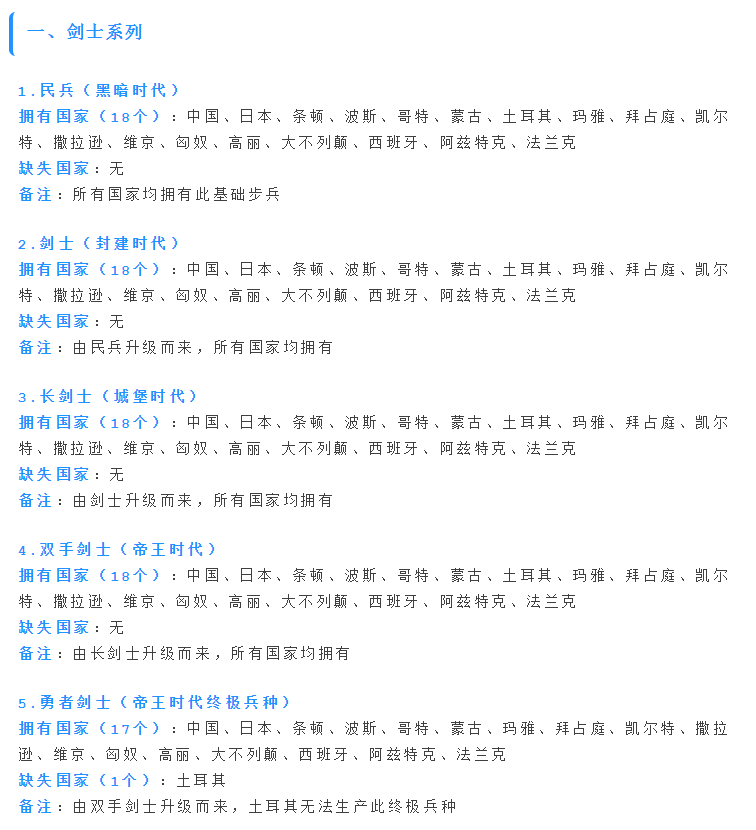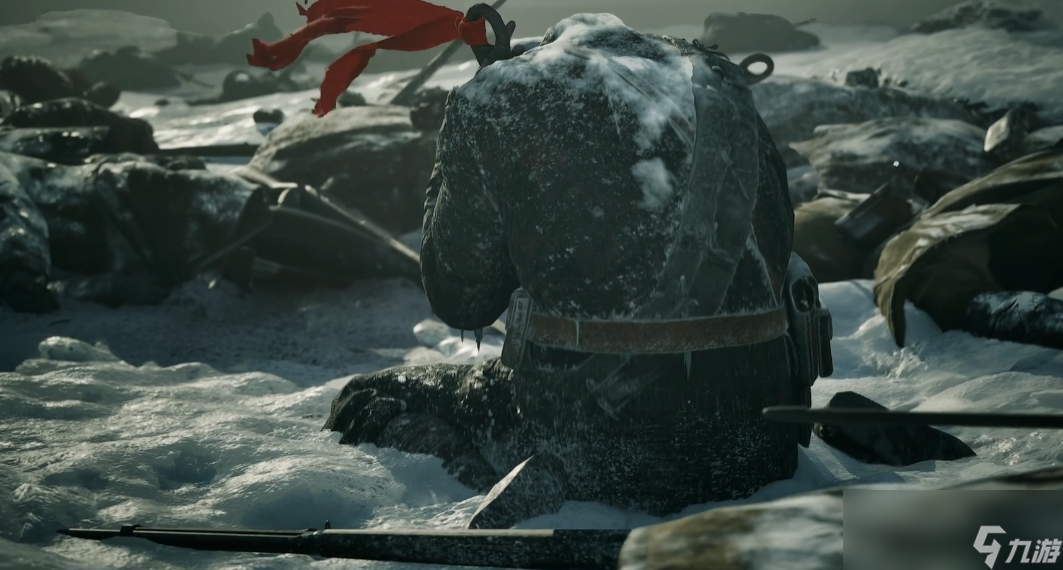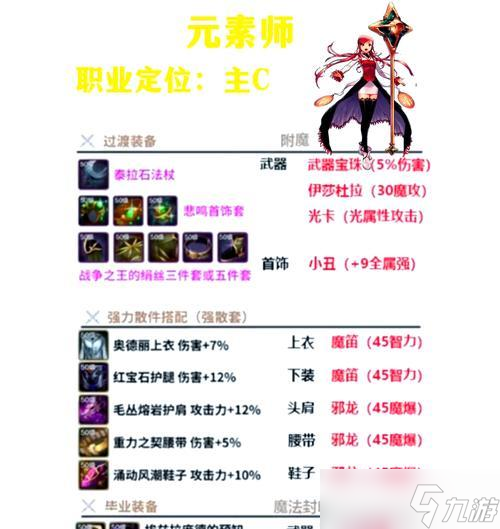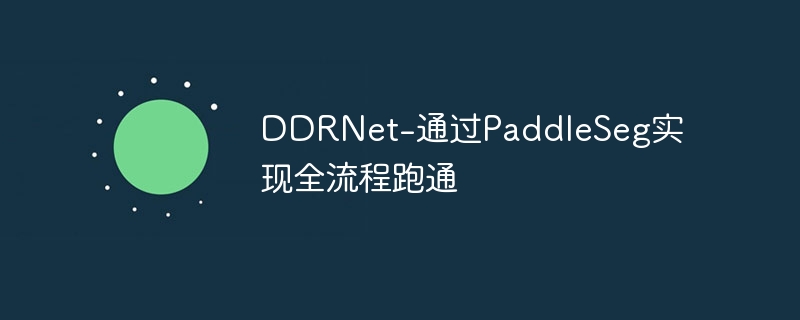DDRNet-通过PaddleSeg实现全流程跑通
时间:2025-07-28 | 作者: | 阅读:0本项目基于DDRNet实现实时语义分割,将其由其他框架转为PaddlePaddle实现并轻量化,用深度可分卷积提升推理速度。使用surpvisely人像数据集,提供带中文注释的网络文件,需创建YML配置文件按PaddleSeg流程训练,还包含数据集处理、训练及测试相关代码与说明。
项目背景
本项目是基于实时准确语义分割的深度双分辨率网络DDRNet创建的,其中DDRNet一个版本Cityscapes test上达到109 FPS / 77.4%mIoU!表现达到SOTA!综合性能优于SFNet、MSFNet和BiSeNetV2等网络。因为项目需求,需要使用到DDRNet,而paddleseg里面尚未内置有DDRNet的网络文件,而源代码作者已经开源,但是是基于其他框架实现的,所以我就将源代码改为使用paddlepaddle实现,并且将其做了一定的改进。 1.本项目中的DDRNet的网络实现并不是原版,因为项目需要,所以我对其做了一定的轻量化处理,进行了将普通卷积替换成深度可分卷积等操作,让该网络的推理速度得到了进一步的提升。 2.网络文件在Notebook处,可根据需要修改,并且将其按照PaddleSeg官方文档,进行自定义模型,完成训练。 3.本项目的数据集是surpvisely人像数据集,可根据需要进行修改。 4.网络文件已经进行了中文注释,方便阅读。登录后复制
? ?
环境配置
首先安装Paddleseg环境
此处使用gitee的下载联机,在国内使用下载更快
In [?]!pip install paddleseg登录后复制 ? ?In [?]
!git clone https://gitee.com/PaddlePaddle/PaddleSeg登录后复制 ? ?In [1]
#进入数据集目录%cd data/data61378/登录后复制 ? ? ? ?
/home/aistudio/data/data61378登录后复制 ? ? ? ?In [?]
#对数据集进行解压,并且返回根目录!unzip humanseg.zip%cd登录后复制 ? ?
相关配置提示
因为本项目所使用的DDRNet并非paddleseg内置的网络模型
所以需要自己创建YML文件,以及模型文件,在下方的Code Block中已经给出,可根据需要自己更改,如不是很了解YML文件如何使用,可以在paddleseg的仓库中,找到相关的使用教程
此处附上链接: https://gitee.com/paddlepaddle/PaddleSeg#%E4%BD%BF%E7%94%A8%E6%95%99%E7%A8%8B-
YML配置文件,应创建在 work/PaddleSeg/configs/ddrnet/ddrnet.yml 路径下 下方为YML文件内容,复制粘贴进去即可
以下为YML文件配置
batch_size: 48 # 设定迭代一次送入网络的图片数量。一般来说,你所使用机器的显存越大,可以调高batch_size的值。iters: 5000 # 迭代次数model: type: DDRNet # 自定义模型类的名称 num_classes: 2 # 标注图中像素类别个数。你的模型应该是根据具体的分割任务设计的,因此你知道该任务下像素类别个数 pretrained: output/iter_12000 # 如果你有网络的与预训练参数,请指定其存放路径train_dataset: type: Dataset # 自定义数据集类的名称 dataset_root: data/data61378/humanseg/ train_path: data/data61378/humanseg/train.txt num_classes: 2 #此处为模型输出类别数, 本项目中为人像分割,所以有人像+背景两类,故为2 transforms: - type: Resize target_size: [512, 512] - type: ResizeStepScaling min_scale_factor: 0.5 max_scale_factor: 2.0 scale_step_size: 0.25 - type: RandomPaddingCrop crop_size: [512, 512] - type: RandomHorizontalFlip - type: RandomDistort brightness_range: 0.4 contrast_range: 0.4 saturation_range: 0.4 - type: Normalize mode: train # 对训练集设定训练模式val_dataset: type: Dataset dataset_root: data/data61378/humanseg/ val_path: data/data61378/humanseg/val.txt num_classes: 2 transforms: - type: Resize target_size: [512, 512] - type: Normalize mode: val # 对验证集设定验证模式optimizer: # 优化器设置 type: sgd momentum: 0.9 weight_decay: 4.0e-5lr_scheduler: # 学习率的设置 type: PolynomialDecay learning_rate: 0.01 power: 0.9 end_lr: 0# lr_scheduler:# type: ReduceOnPlateau# learning_rate: 0.04# mode: 'min'# factor: 0.6# patience: 1000# threshold_mode: 'rel'# verbose: Trueloss: types: - type: CrossEntropyLoss coef: [1]登录后复制 ? ?
数据集处理
接下来的两个Code Block为处理数据集的代码,将surpervisely数据集的格式处理为符合paddleseg套件的要求格式进行训练。
数据处理完之后,会生成两个txt文件,train.txt文件和val.txt文件,分别对应训练数据集的路径,和验证数据集路径
In [2]#将数据集中的标签文件转换为符合paddle框架要求的标签文件#此处处理时间会比较久,需要稍微等待一下import cv2import osimport numpy as npfrom tqdm import tqdmdef three2one(path,path_): img=cv2.imread(path) img = cv2.cvtColor(img,cv2.COLOR_BGR2GRAY) ret,img=cv2.threshold(img,2,255,cv2.THRESH_BINARY) img = np.uint8((np.double(img)) / 255) cv2.imwrite(path_,img)root = r'data/data61378/humanseg/person_mask'root_ = r'data/data61378/humanseg/person_mask_data'if not os.path.exists(root_): os.mkdir(root_)names = os.listdir(root)for i,name in enumerate(names): if name[-2]=='n': # print(name[-3]) path = os.path.join(root,name) path_ = os.path.join(root_,name) # print(path) three2one(path,path_)# 适配数据集路径-0src_0 = r'data/data61378/humanseg/person_mask'dst_0 = r'data/data61378/humanseg/person_mask_orig'os.rename(src_0, dst_0)# 适配数据集路径-1src_1 = r'data/data61378/humanseg/person_mask_data'dst_1 = r'data/data61378/humanseg/person_mask'os.rename(src_1, dst_1)print('Done!')登录后复制 ? ? ? ?
Done!登录后复制 ? ? ? ?In [4]
###surpervisely数据集的label和train.txt的生成###挂载的数据集的label和train的txt文件里面的内容是重复的###将数据集打乱,按9:1比例划分训练集和验证集#进入目标目录%cd data/data61378/humansegimport osimport numpy as npfrom tqdm import tqdmimport matplotlib.pyplot as pltimport cv2from PIL import Imagedata = []path_img = 'person'path_lab = 'person_mask'train_txt = 'train.txt'label_txt = 'val.txt'def dataset(data, path_img, path_lab): for item in os.listdir(path_img): img = os.path.join(path_img, item) label = os.path.join(path_lab, item.split('.')[0] + '.png') data.append([os.path.join(path_img, item), os.path.join(path_lab, item.split('.')[0] + '.png') ]) if os.path.exists(img) and os.path.exists(label): pass else: raise 'path error!' np.random.shuffle(data) # 划分训练集和验证集 train_data = data[len(data) // 9:] val_data = data[:len(data) // 9] write_path(train_data, train_txt) write_path(val_data, label_txt)def write_path(data, path): with open(path ,'w') as f: for item in tqdm(data): f.write(item[0] + ' ' + item[1] + 'n') print('Done!') print('Total: ', len(data))#显示出来看看对不对def draw(img_list, name=None): plt.figure(figsize=(20, 20)) for i in range(len(img_list)): plt.subplot(1, len(img_list), i+1) plt.imshow(img_list[i]) if name: plt.title(name[i]) #plt.legend() plt.show()#处理数据集图片dataset(data, path_img, path_lab)#展示测试img1 = cv2.cvtColor(cv2.imread('person/active-cold-female-girl-41371.jpeg'), cv2.COLOR_BGR2RGB) # BGR -> RGBimg2_lab = cv2.imread('person_mask/active-cold-female-girl-41371.png')[..., 0]draw([img1, img2_lab])#返回根目录%cd登录后复制 ? ? ? ?
100%|██████████| 5077/5077 [00:00<00:00, 936968.43it/s]100%|██████████| 634/634 [00:00<00:00, 518562.55it/s]登录后复制 ? ? ? ?
/home/aistudio/data/data61378/humansegDone!Total: 5077Done!Total: 634登录后复制 ? ? ? ?
<br/>登录后复制 ? ? ? ?
<Figure size 1440x1440 with 2 Axes>登录后复制 ? ? ? ? ? ? ? ?
/home/aistudio登录后复制 ? ? ? ?
DDRNet网络文件
下方的code blcok为DDRNet的实现
我对其进行了一定的轻量化处理,在性能降低很小的情况下,加快了在CPU上的推理速度。
自定义网络文件的路径为 work/PaddleSeg/paddleseg/models/ddrnet.py
并且需要在work/PaddleSeg/paddleseg/models/init.py 中进行初始化,具体使用教程在paddleseg仓库中已经有提及,并且非常详细。
下图为DDRNet的结构图

''' DDRNet网络文件,进行了轻量化,将卷积替换成深度可分卷积,并进行了channel_shuffle 目前测试,在CPU推理时间为200ms/张 GPU推理时间为60ms/张'''from paddleseg.models import layersfrom paddleseg.cvlibs import managerfrom paddleseg.utils import utilsimport paddleimport paddle.nn as nnimport paddle.nn.functional as Fimport numpy as npbn_mom = 0.1def channel_shuffle(x, groups): ### type: (torch.Tensor, int) -> torch.Tensor #print(x.shape) batchsize, num_channels, height, width = x.shape channels_per_group = num_channels // groups # reshape x = paddle.reshape(x, [batchsize, groups, channels_per_group, height, width]) x = paddle.transpose(x, [0, 2, 1, 3, 4]) # flatten x = paddle.reshape(x, [batchsize, -1, height, width]) return xclass DwConv(nn.Layer): def __init__(self, inplanes, out_channels, kernel_size=3, stride=1, padding=1,bias_attr=False): super(DwConv, self).__init__() self.depth_conv = nn.Conv2D(inplanes, inplanes, kernel_size=kernel_size, stride=stride, padding=padding, groups=inplanes, bias_attr=bias_attr) self.point_conv = nn.Conv2D(inplanes, out_channels, kernel_size=1, stride=1, padding=0, groups=8,bias_attr=bias_attr) def forward(self, x): x = self.depth_conv(x) x = self.point_conv(x) x = channel_shuffle(x, groups=8) return x#论文作者修改过了的resblockclass basicBlock(nn.Layer): expansion = 1 def __init__(self,inplanes, out_channels, stride=1, downsample=None, no_relu=False): super(basicBlock, self).__init__() self.conv1 = DwConv(inplanes, out_channels, kernel_size=3, stride=stride,padding=1) self.bn1 = nn.BatchNorm2D(out_channels, momentum=bn_mom) self.relu = nn.ReLU() self.conv2 = DwConv(out_channels, out_channels,kernel_size=3, stride=1,padding=1) self.bn2 = nn.BatchNorm2D(out_channels, momentum=bn_mom) self.downsample = downsample self.stride = stride self.no_relu = no_relu def forward(self, x): res = x out = self.conv1(x) out = self.bn1(out) out = self.relu(out) out = self.conv2(out) out = self.bn2(out) if self.downsample is not None: res = self.downsample(x) out += res if self.no_relu: return out else: return self.relu(out)class Bottleneck(nn.Layer): expansion = 2 #通道扩大倍数 def __init__(self, inplanes, out_channels, stride=1, downsample=None, no_relu=True): super(Bottleneck, self).__init__() super(Bottleneck, self).__init__() self.conv1 = nn.Conv2D(inplanes, out_channels, kernel_size=1, bias_attr=False) self.bn1 = nn.BatchNorm2D(out_channels, momentum=bn_mom) self.conv2 = DwConv(out_channels, out_channels, kernel_size=3, stride=stride, padding=1, bias_attr=False) self.bn2 = nn.BatchNorm2D(out_channels, momentum=bn_mom) self.conv3 = nn.Conv2D(out_channels, out_channels * self.expansion, kernel_size=1, bias_attr=False) self.bn3 = nn.BatchNorm2D(out_channels * self.expansion, momentum=bn_mom) self.relu = nn.ReLU() self.downsample = downsample self.stride = stride self.no_relu = no_relu def forward(self, x): res = x out = self.conv1(x) out = self.bn1(out) out = self.relu(out) out = self.conv2(out) out = self.bn2(out) out = self.relu(out) out = self.conv3(out) out = self.bn3(out) if self.downsample is not None: res = self.downsample(x) out += res if self.no_relu: return out else: return self.relu(out)#论文中提出的特征提取结构 实验中效果比PPM更好class DAPPM(nn.Layer): def __init__(self, inplanes, branch_planes, outplanes): super(DAPPM, self).__init__() #获得不同感受野 self.scale0 = nn.Sequential( nn.BatchNorm2D(inplanes, momentum=bn_mom), nn.ReLU(), nn.Conv2D(inplanes, branch_planes, kernel_size=1, bias_attr=False), ) self.scale1 = nn.Sequential(nn.AvgPool2D(kernel_size=5, stride=2, padding=2), nn.BatchNorm2D(inplanes, momentum=bn_mom), nn.ReLU(), nn.Conv2D(inplanes, branch_planes, kernel_size=1, bias_attr=False), ) self.scale2 = nn.Sequential(nn.AvgPool2D(kernel_size=9, stride=4, padding=4), nn.BatchNorm2D(inplanes, momentum=bn_mom), nn.ReLU(), nn.Conv2D(inplanes, branch_planes, kernel_size=1, bias_attr=False), ) self.scale3 = nn.Sequential(nn.AvgPool2D(kernel_size=17, stride=8, padding=8), nn.BatchNorm2D(inplanes, momentum=bn_mom), nn.ReLU(), nn.Conv2D(inplanes, branch_planes, kernel_size=1, bias_attr=False), ) self.scale4 = nn.Sequential(nn.AdaptiveAvgPool2D((1, 1)), nn.BatchNorm2D(inplanes, momentum=bn_mom), nn.ReLU(), nn.Conv2D(inplanes, branch_planes, kernel_size=1, bias_attr=False), ) #对不同感受野特征图进行特征提取 self.process1 = nn.Sequential( nn.BatchNorm2D(branch_planes, momentum=bn_mom), nn.ReLU(), DwConv(branch_planes, branch_planes, kernel_size=3, padding=1, bias_attr=False), ) self.process2 = nn.Sequential( nn.BatchNorm2D(branch_planes, momentum=bn_mom), nn.ReLU(), DwConv(branch_planes, branch_planes, kernel_size=3, padding=1, bias_attr=False), ) self.process3 = nn.Sequential( nn.BatchNorm2D(branch_planes, momentum=bn_mom), nn.ReLU(), DwConv(branch_planes, branch_planes, kernel_size=3, padding=1, bias_attr=False), ) self.process4 = nn.Sequential( nn.BatchNorm2D(branch_planes, momentum=bn_mom), nn.ReLU(), DwConv(branch_planes, branch_planes, kernel_size=3, padding=1, bias_attr=False), ) #concat层 self.compression = nn.Sequential( nn.BatchNorm2D(branch_planes * 5, momentum=bn_mom), nn.ReLU(), nn.Conv2D(branch_planes * 5, outplanes, kernel_size=1, bias_attr=False), ) self.shortcut = nn.Sequential( nn.BatchNorm2D(inplanes, momentum=bn_mom), nn.ReLU(), nn.Conv2D(inplanes, outplanes, kernel_size=1, bias_attr=False), ) def forward(self, x): # x.shape: NCHW width = x.shape[-1] height = x.shape[-2] x_list = [] x_list.append(self.scale0(x)) x_list.append(self.process1((F.interpolate(self.scale1(x), size=[height, width], mode='bilinear') + x_list[0]))) x_list.append((self.process2((F.interpolate(self.scale2(x), size=[height, width], mode='bilinear') + x_list[1])))) x_list.append(self.process3((F.interpolate(self.scale3(x), size=[height, width], mode='bilinear') + x_list[2]))) x_list.append(self.process4((F.interpolate(self.scale4(x), size=[height, width], mode='bilinear') + x_list[3]))) # NCHW out = self.compression(paddle.concat(x_list, 1)) + self.shortcut(x) return outclass segmenthead(nn.Layer): def __init__(self, inplanes, interplanes, outplanes, scale_factor=None): super(segmenthead, self).__init__() self.bn1 = nn.BatchNorm2D(inplanes, momentum=bn_mom) self.conv1 = DwConv(inplanes, interplanes, kernel_size=3, padding=1, bias_attr=False) self.bn2 = nn.BatchNorm2D(interplanes, momentum=bn_mom) self.relu = nn.ReLU() self.conv2 = nn.Conv2D(interplanes, outplanes, kernel_size=1, padding=0, bias_attr=True) self.scale_factor = scale_factor def forward(self, x): x = self.conv1(self.relu(self.bn1(x))) out = self.conv2(self.relu(self.bn2(x))) if self.scale_factor is not None: height = x.shape[-2] * self.scale_factor width = x.shape[-1] * self.scale_factor out = F.interpolate(out, size=[height, width], mode='bilinear') return outclass DualRseNet(nn.Layer): #双边残存网络 def __init__(self, block, layers, num_classes=2, planes=64, spp_planes=128, head_planes=128, augment=False,pretrained=None): super(DualRseNet, self).__init__() hige_planes = planes * 2 self.augment = augment self.pretrained = pretrained self.conv1 = nn.Sequential( nn.Conv2D(in_channels=3, out_channels=planes, kernel_size=3, stride=2, padding=1), nn.BatchNorm2D(planes, momentum=bn_mom), nn.ReLU(), DwConv(planes,planes,kernel_size=3, stride=2, padding=1), nn.BatchNorm2D(planes, momentum=bn_mom), nn.ReLU() ) self.relu = nn.ReLU() self.layer1 = self._make_layer(block, planes, planes, layers[0]) self.layer2 = self._make_layer(block, planes, planes * 2, layers[1], stride=2) self.layer3 = self._make_layer(block, planes * 2, planes * 4, layers[2], stride=2) self.layer4 = self._make_layer(block, planes * 4, planes * 8, layers[3], stride=2) self.compression3 = nn.Sequential( nn.Conv2D(planes * 4, hige_planes, kernel_size=1, bias_attr=False), nn.BatchNorm2D(hige_planes, momentum=bn_mom), ) self.compression4 = nn.Sequential( nn.Conv2D(planes * 8, hige_planes, kernel_size=1, bias_attr=False), nn.BatchNorm2D(hige_planes, momentum=bn_mom), ) self.down3 = nn.Sequential( DwConv(hige_planes, planes * 4, kernel_size=3, stride=2, padding=1, bias_attr=False), nn.BatchNorm2D(planes * 4, momentum=bn_mom), ) self.down4 = nn.Sequential( DwConv(hige_planes, planes * 4, kernel_size=3, stride=2, padding=1, bias_attr=False), nn.BatchNorm2D(planes * 4, momentum=bn_mom), nn.ReLU(), DwConv(planes * 4, planes * 8, kernel_size=3, stride=2, padding=1, bias_attr=False), nn.BatchNorm2D(planes * 8, momentum=bn_mom), ) self.layer3_ = self._make_layer(block, planes * 2, hige_planes, 2) self.layer4_ = self._make_layer(block, hige_planes, hige_planes, 2) self.layer5_ = self._make_layer(Bottleneck, hige_planes, hige_planes, 1) self.layer5 = self._make_layer(Bottleneck, planes * 8, planes * 8, 1, stride=2) self.spp = DAPPM(planes * 16, spp_planes, planes * 4) # segmenthead 分割头 if self.augment: self.seghead_extra = segmenthead(hige_planes, head_planes, num_classes) self.final_layer = segmenthead(planes * 4, head_planes, num_classes) for m in self.sublayers(): if isinstance(m, nn.Conv2D): n = m.weight.shape[0]*m.weight.shape[1]*m.weight.shape[2] v = np.random.normal(loc=0.,scale=np.sqrt(2./n),size=m.weight.shape).astype('float32') m.weight.set_value(v) elif isinstance(m, nn.BatchNorm): m.weight.set_value(np.ones(m.weight.shape).astype('float32')) m.bias.set_value(np.zeros(m.bias.shape).astype('float32')) self.init_weight() #残差结构的生成 def _make_layer(self, block, inplanes, planes, blocks, stride=1): downsample = None if stride != 1 or inplanes != planes * block.expansion: # basic.expansion=1 bottle.expansion=2 downsample = nn.Sequential( # 使用conv进行下采样 nn.Conv2D(inplanes, planes * block.expansion, kernel_size=1, stride=stride, bias_attr=False), nn.BatchNorm2D(planes * block.expansion, momentum=bn_mom), ) layers = [] layers.append(block(inplanes, planes, stride, downsample)) # 1个block inplanes = planes * block.expansion for i in range(1, blocks): if i == (blocks - 1): layers.append(block(inplanes, planes, stride=1, no_relu=True)) # 最后一个层使用relu输出 else: layers.append(block(inplanes, planes, stride=1, no_relu=False)) return nn.Sequential(*layers) def forward(self, x): # x.shape: NCHW input = x width_output = x.shape[-1] // 8 height_output = x.shape[-2] // 8 layers = [] x = self.conv1(x) # conv1 x = self.layer1(x) layers.append(x) # conv2 layer[0] x = self.layer2(self.relu(x)) layers.append(x) # conv3 layer[1] x = self.layer3(self.relu(x)) # 低分辨率层 layers.append(x) # conv4 layer[2] x_ = self.layer3_(self.relu(layers[1])) # 复制一份 高分辨率层 # Bilateral fusion 论文中的融合方法 x = x + self.down3(self.relu(x_)) # 高分辨率 通过conv下采样 与低分辨率相加 x_ = x_ + F.interpolate( # 低分辨率上采样后和高分辨率相加 self.compression3(self.relu(layers[2])), # 1x1conv 将通道下降 size=[height_output, width_output], mode='bilinear') if self.augment: temp = x_ # Conv5_1 使用basicblock x = self.layer4(self.relu(x)) # 低分辨率层 layers.append(x) # conv5_1 layer[3] x_ = self.layer4_(self.relu(x_)) # 高分辨率 # Bilateral fusion x = x + self.down4(self.relu(x_)) # 高分辨率 通过conv下采样 与低分辨率相加 x_ = x_ + F.interpolate( # 低分辨率上采样后和高分辨率相加 self.compression4(self.relu(layers[3])), # 1x1conv 将通道下降 size=[height_output, width_output], mode='bilinear') #print(x_) #Conv5_1阶段 使用bottleblock x_ = self.layer5_(self.relu(x_)) # 高分通道 x = F.interpolate( # 低分通道 self.spp(self.layer5(self.relu(x))), # 使用DAPPM进行多尺度特征融合 size=[height_output, width_output], mode='bilinear') x_ = self.final_layer(x + x_) if self.augment: #辅助计算损失 x_extra = self.seghead_extra(temp) return [x_, x_extra] else: return [F.interpolate(x_, size=[input.shape[-2],input.shape[-1]], mode='bilinear')] def init_weight(self): if self.pretrained is not None: utils.load_entire_model(self, self.pretrained) def DualResNet_imagenet(num_classes, pretrained=None): model = DualRseNet(basicBlock, [2, 2, 2, 2], num_classes=num_classes, planes=32, spp_planes=128, head_planes=64, augment=False, pretrained=pretrained) #加载预训练模型 填入地址 return model@manager.MODELS.add_componentdef DDRNet(num_classes, pretrained): model = DualResNet_imagenet(num_classes=num_classes, pretrained=pretrained) return model登录后复制 ? ?
进行训练
In [5]!python work/PaddleSeg/train.py --config work/PaddleSeg/configs/ddrnet/ddrnet.yml --do_eval --save_interval 500 --save_dir output登录后复制 ? ? ? ?
2022-03-17 16:58:22 [INFO]------------Environment Information-------------platform: Linux-4.4.0-150-generic-x86_64-with-debian-stretch-sidPython: 3.7.4 (default, Aug 13 2019, 20:35:49) [GCC 7.3.0]Paddle compiled with cuda: TrueNVCC: Cuda compilation tools, release 10.1, V10.1.243cudnn: 7.6GPUs used: 1CUDA_VISIBLE_DEVICES: NoneGPU: ['GPU 0: Tesla V100-SXM2-32GB']GCC: gcc (Ubuntu 7.5.0-3ubuntu1~16.04) 7.5.0PaddleSeg: 2.4.0PaddlePaddle: 2.2.2OpenCV: 4.1.1------------------------------------------------2022-03-17 16:58:22 [INFO]---------------Config Information---------------batch_size: 48iters: 5000loss: coef: - 1 types: - ignore_index: 255 type: CrossEntropyLosslr_scheduler: end_lr: 0 learning_rate: 0.01 power: 0.9 type: PolynomialDecaymodel: num_classes: 2 pretrained: null type: DDRNetoptimizer: momentum: 0.9 type: sgd weight_decay: 4.0e-05train_dataset: dataset_root: data/data61378/humanseg/ mode: train num_classes: 2 train_path: data/data61378/humanseg/train.txt transforms: - target_size: - 640 - 640 type: Resize - max_scale_factor: 2.0 min_scale_factor: 0.5 scale_step_size: 0.25 type: ResizeStepScaling - crop_size: - 640 - 640 type: RandomPaddingCrop - type: RandomHorizontalFlip - brightness_range: 0.4 contrast_range: 0.4 saturation_range: 0.4 type: RandomDistort - type: Normalize type: Datasetval_dataset: dataset_root: data/data61378/humanseg/ mode: val num_classes: 2 transforms: - target_size: - 640 - 640 type: Resize - type: Normalize type: Dataset val_path: data/data61378/humanseg/val.txt------------------------------------------------W0317 16:58:22.691426 3549 device_context.cc:447] Please NOTE: device: 0, GPU Compute Capability: 7.0, Driver API Version: 10.1, Runtime API Version: 10.1W0317 16:58:22.691483 3549 device_context.cc:465] device: 0, cuDNN Version: 7.6./opt/conda/envs/python35-paddle120-env/lib/python3.7/site-packages/paddle/nn/layer/norm.py:653: UserWarning: When training, we now always track global mean and variance. ”When training, we now always track global mean and variance.“)/opt/conda/envs/python35-paddle120-env/lib/python3.7/site-packages/paddle/fluid/dygraph/math_op_patch.py:253: UserWarning: The dtype of left and right variables are not the same, left dtype is paddle.float32, but right dtype is paddle.int64, the right dtype will convert to paddle.float32 format(lhs_dtype, rhs_dtype, lhs_dtype))2022-03-17 16:59:33 [INFO][TRAIN] epoch: 1, iter: 10/5000, loss: 0.6333, lr: 0.009984, batch_cost: 6.6284, reader_cost: 6.25825, ips: 7.2416 samples/sec | ETA 09:11:15^C登录后复制 ? ? ? ?
测试下模型分割的效果好不好
需要自己上次图片,然后在image_path填好路径噢
输出的路径为save_dir处,根据自己需求更改
In [?]!python work/PaddleSeg/predict.py --config work/PaddleSeg/configs/ddrnet/ddrnet.yml --model_path output/best_model/model.pdparams --image_path data/test.png --save_dir output/result登录后复制 ? ?
效果展示
In [4]import numpy as npfrom PIL import Imageimg= Image.open('output/result/added_prediction/result.png')img.show()登录后复制 ? ? ? ?
<PIL.PngImagePlugin.PngImageFile image mode=RGB size=944x627 at 0x7F5DAAAA92D0>登录后复制 ? ? ? ? ? ? ? ?
来源:https://www.php.cn/faq/1428329.html
免责声明:文中图文均来自网络,如有侵权请联系删除,心愿游戏发布此文仅为传递信息,不代表心愿游戏认同其观点或证实其描述。
相关文章
更多-

- nef 格式图片降噪处理用什么工具 效果如何
- 时间:2025-07-29
-

- 邮箱长时间未登录被注销了能恢复吗?
- 时间:2025-07-29
-

- Outlook收件箱邮件不同步怎么办?
- 时间:2025-07-29
-

- 为什么客户端收邮件总是延迟?
- 时间:2025-07-29
-

- 一英寸在磁带宽度中是多少 老式设备规格
- 时间:2025-07-29
-

- 大卡和年龄的关系 不同年龄段热量需求
- 时间:2025-07-29
-

- jif 格式是 gif 的变体吗 现在还常用吗
- 时间:2025-07-29
-

- hdr 格式图片在显示器上能完全显示吗 普通显示器有局限吗
- 时间:2025-07-29
精选合集
更多大家都在玩
大家都在看
更多-

- 乖乖风格男生网名大全两个字(精选100个)
- 时间:2025-12-26
-
- 浙江绍兴轨道交通2号线列车撞击事故调查报告公布 致3死1重伤
- 时间:2025-12-26
-
- 觉醒第3集剧情介绍
- 时间:2025-12-26
-

- 【攻略分享】步兵营兵种完全解析
- 时间:2025-12-26
-

- 多种武器杀鬼子 国产抗日FPS《抵抗者》新实机预告
- 时间:2025-12-26
-

- 《掌握地下城3,玩转游戏的15个小技巧》 玩转地下城3
- 时间:2025-12-26
-
- 觉醒第2集剧情介绍
- 时间:2025-12-26
-

- 温柔惊艳的姓氏男生网名(精选100个)
- 时间:2025-12-26













